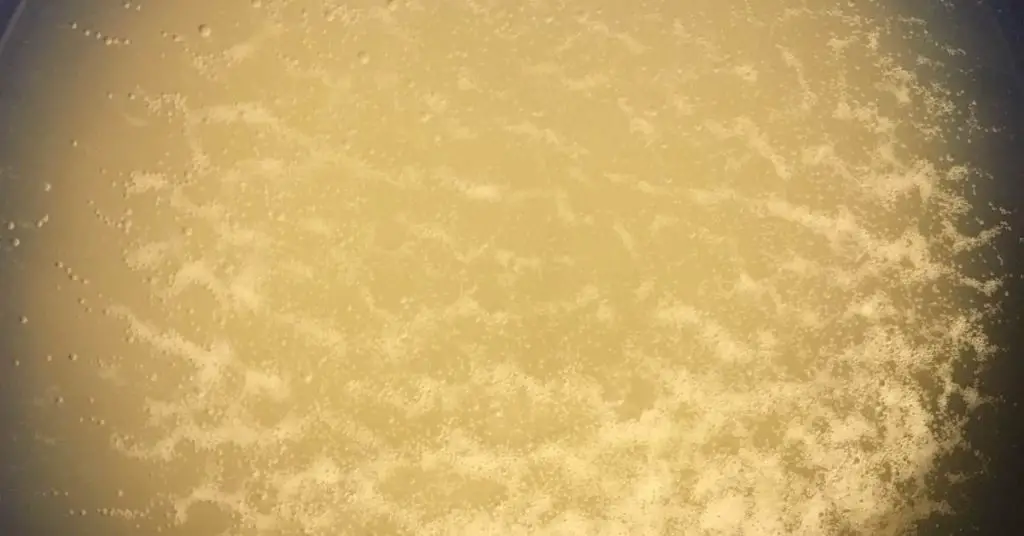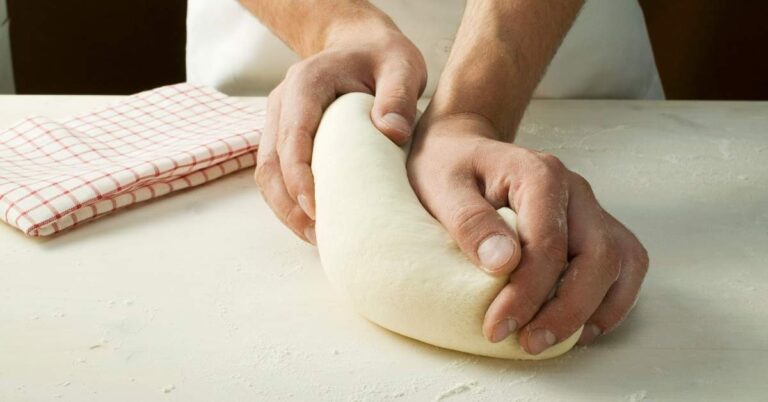How Much Yeast Do You Put In Pizza Dough? An Expert Answers.
If you’ve made pizza dough before, you know it can sometimes be a challenge to figure out the right balance of ingredients to get that perfectly airy and tasty crust. Among the most important of these ingredients is yeast – but how much yeast should actually you put in a pizza dough?
In general, you should use 1/4 teaspoon of active dry yeast per 500 grams of pizza dough (roughly 2 standard sized pizza dough balls) for an overnight rise. If you’re using instant dry yeast, you should use less yeast – about 2 pinches per 500 grams of dough. For pizza dough you want to use the same day, you should use more yeast, or about 3/4 of a teaspoon of active dry yeast or 1-2/3 of a teaspoon of instant dry yeast.
But figuring out how much yeast to put in your pizza dough isn’t an exact science. In reality, it will take quite a bit of experimentation before you strike that perfect balance between the length of the rise, the temperature of your room and the type of yeast you’re using.
Looking for a pizza dough recipe with a perfect yeast to dough ratio to get you started? Check out my quick and easy homemade pizza crust recipe here.

Yeast Is A Lot More Than Just An Ingredient In Pizza Dough
When I first started making pizza, the amount of yeast I was putting in my recipes just seemed kind of random. Most instructions you read online tell you to dump a whole packet of yeast into each batch of dough and let it rise – this is wrong. When I followed this advice I usually ended up with a dough that was spilling out over the mixing bowl within a couple of hours and a crust that tasted and smelled like warm beer.
A lot of my confusion stemmed from the fact that I didn’t really understand the role of yeast in baking, let alone how it was affecting my pizza dough. So let’s begin by shedding some light on the sometimes mysterious role yeast plays in making pizza dough – or any other kind of dough for that matter.
Related Post: How to defrost pizza dough
Yeast Is Alive
If you’ve been reading this blog for a while, you’ve probably heard me say this before: yeast is not just an ingredient, it’s a living and breathing organism. Yeast literally brings life to an otherwise inanimate mixture of flour, water and salt.
This is because yeast is literally alive – it’s a fungus. And just like you and me, yeast eats, breeds, gives off waste and then dies. This is critical to understand because yeast is the most important factor in determining whether your latest homemade pizza will be a hit or a miss.
A properly cared for yeast starter determines whether your pizza crust will be fluffy and airy or flat and dense. It also determines if your pizza crust will taste like wet flour or have the tangy undertones reminiscent of your favorite pizza place.
How Yeast Works In Pizza Dough
When dry yeast is mixed with water and flour, an amazing process begins to occur. The yeast converts the starches in the flour to sugar and then feeds on it. As the yeast feeds, it gives off various by-products, namely carbon dioxide (CO2), acids and alcohols. These by-products affect the texture and the taste of the finished product.
The carbon dioxide gas is what makes the dough rise as it gets trapped in the stretchy gluten pockets within the dough. This is why a rising pizza dough has bubbles on the surface and when these gas pockets heat up in the oven, it’s what makes a “rising crust” pizza.
The other by-products, acids and alcohol, have a strong influence on the taste of the pizza. If you’ve ever made a yeast-free bread dough, or even a same-day bread dough, you probably noticed that the taste was fairly bland. This is because the fermentation process hasn’t taken place yet, or in other words the alcohol and acid haven’t had a chance to build up and affect the taste.
Less Yeast In Pizza Dough Is Better Than More
So if yeast is what makes pizza dough fluffy and tasty, it makes sense that more yeast will produce a better pizza crust, right? Wrong.
It’s actually the other way around. The less yeast you use in your pizza dough, the more time it can rise without blowing out and getting overgrown. This will result in a more complex tasting pizza dough without a yeasty or alcoholic aftertaste, as well as plenty of gasses to help the pizza crust rise but not so much to damage the gluten structure.
This is essentially what pizza dough fermentation is all about. You want to put in just enough yeast to get things going and no more and then let it sit, either at room temperature for several hours or cold-fermenting in the fridge for several days. The longer it rests the better the result will be, as long as you haven’t added too much yeast.
How Much Is Too Much Yeast For Pizza Dough?
Figuring out how much yeast is too much vs just enough can be a difficult task when you consider how many variables there are.
Ambient room temperature, the type of yeast, the brand of yeast and how long you plan to let it ferment all factor into how much yeast you should use.
In general, you should adhere to the following guidelines when adding yeast to your pizza dough:
- If you need your pizza dough ready within a few hours, use the maximum amount of yeast (1 standard packet).
- If you need your pizza dough ready by the end of the day, use about half as much (1/2 standard packet).
- If you’re using instant dry yeast use 30%-40% less than you would active dry yeast.
- If you’re following a no-knead pizza dough recipe and letting it rise overnight, use 1/4 teaspoon of active dry yeast or a couple of pinches of instant dry yeast.
- If you plan on letting the pizza dough cold-ferment for several days in the fridge, use about 1 half of a 1/4 teaspoon of active dry yeast or just a pinch of instant dry yeast.
In addition, keep the following environmental rules of thumb in mind when adding a yeast to your pizza dough:
- If it’s a hot summer day, your yeast will grow and develop faster than on a cold day. Use less yeast or don’t let it rise for as long before using it or putting it in the fridge.
- If it’s a cold winter’s day, expect your dough to take longer to rise. Either use more yeast or place the dough near something warm to compensate if you wish.
- Warm water will activate the yeast faster while water that’s ice cold or super hot will prevent it from activating at all. Lukewarm water is best for most purposes.
Yeast Troubleshooting Guide
| Problem | Solution |
|---|---|
| My pizza dough hasn’t risen at all after several hours. | Your yeast is probably dead. Test it by placing a tablespoon of it in a bowl of water mixed with a tablespoon of sugar. You should start to see activity within 10-15 minutes if it’s alive. |
| My pizza dough has only risen a small amount after several hours and still smells like flour. | You didn’t use enough yeast or you didn’t give it enough time to rise. Give it more time or add more yeast next time. |
| My pizza dough has risen so much it’s spilling out of the mixing bowl. | You used way too much yeast. Try using half as much next time and see what happens. |
| My pizza dough smells like alcohol/vinegar. | Your dough has over fermented either because you used too much yeast or let it rise/ferment for too long. Try using less yeast or placing it in the fridge sooner to slow down the process. |
| My pizza dough rose in the mixing bowl but baked flat in the oven. | You may have used too much yeast and blew out the gluten structure. Either that or you de-gassed the dough with a rolling pin during preparation. |
| I switched from instant yeast to active dry yeast and now my pizza dough won’t rise. | Instant yeast is more potent than active dry yeast so you may need to double the amount – and make sure to activate it in water first. |
Wrapping Up
Ultimately, how much yeast you add to your pizza dough is going to require some experimentation. This is why I’ve tried to give you rules of thumb rather than exact amounts wherever possible. There are just so many variables from brands to yeast types to temperature that an exact number usually just ends up being too much or too little for you individual tastes and needs.
So next time you make a pizza, I encourage you to experiment with the yeast and see how it turns out. But if I can offer some advice, I recommend using a lot less yeast than your average online recipe calls for and giving it plenty of time to rise as well as a 24 hour cold ferment in the fridge before using it.
If the dough winds up rising too much too fast, use a lot less yeast next time or keep it in a colder room. And if it doesn’t rise at all, use a bit more or try a different kind of yeast. Pay attention to the taste and texture of the crust as well.
In my experience, it’s hard to go wrong with a pinch or two of instant dry yeast per each 500 grams of dough. Give it a try, you’ll be surprised at how little yeast you actually need to get your dough growing.
Related Questions
How Much Yeast Is In A Pizza?
Most online recipes call for a wildly high amount of yeast. If you plan on making a pizza dough for use the next day, try starting with 1/4 teaspoon of active dry yeast. If the dough is for later the same dough, try using 3/4 of a teaspoon. Check the results and adjust as necessary for next time.
Can You Put Too Much Yeast In A Pizza Dough?
Be careful not to use too much yeast in your pizza dough or your risk blowing out the gluten structure of the dough and ending up with a crust that tastes acidic and sour. This happens when the yeast grows out of control and produces too much CO2 gas and alcohols as a result.
How Much Dry Yeast Is In A Pizza Dough?
The average batch of pizza dough, weighing around 500 grams, has between 1 full packet to 1/4 teaspoon of active dry yeast. The amount varies depending on how fast you want the pizza dough to rise, but if you want a tasty pizza with a delicate crust I recommend using as little yeast as possible and letting the yeast multiply slowly over time. This is how pizza dough fermentation works.
What Is The Best Yeast For Pizza Dough
In general, the best yeast for pizza dough is whatever is most available in your area. For many people this will be instant or active dry yeast, but for others it will be fresh yeast. If you’re based in North America, I recommend using instant dry yeast because it’s available everywhere and you only need a pinch of it to work.
Do You Have To Activate Yeast For Pizza Dough?
In general, you don’t have to activate yeast in water before using it. However, it is a best practice to do so because it gets the yeast working faster and tells you if it’s still alive before you mix it in with the rest of the ingredients. This saves time and avoids wasting ingredients.
What Happens If You Don’t Use Yeast In Pizza Dough?
If you make a pizza dough without yeast, it will still be edible but the taste and texture won’t be anything like a traditional pizza crust. This is because yeast produces gas that helps the dough rise in the oven as well as acids and alcohols that give it a distinct taste.







How much yeast would you use for 25 bag of all trumps high gluten pizza flower.
Hi Donald, thanks for the question.
I generally like to use a minimal amount of yeast so I can let it ferment slowly over time, often as little as 0.10-0.15% of the total flour. So in your example of 25kg of flour, I would (personally) use around 30 grams of yeast.
However, if you plan on using the dough on the same day you make it, you’ll need to add more yeast – as much as 3% or more. In general, the faster you want to use the dough, the more yeast you need. This is why I always make my pizza dough at least 24 hours in advance.
Hope that helps!